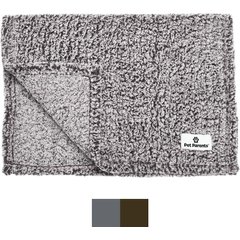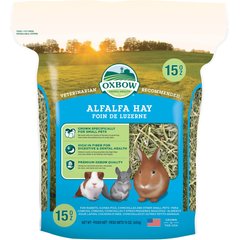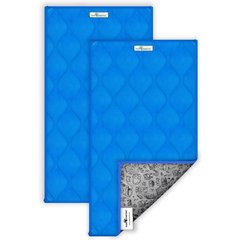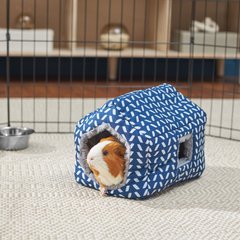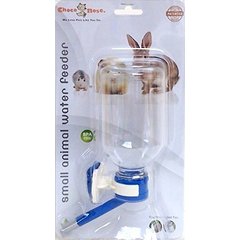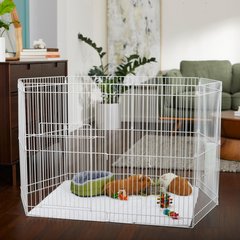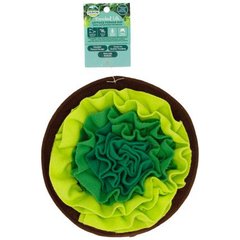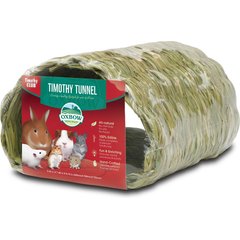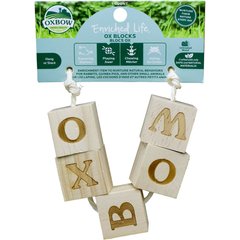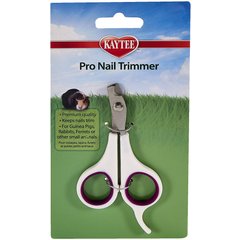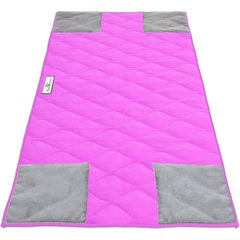How to Care for Your Guinea Pig: A Guide for Pet Parents
Elena Karetnikova/iStock / Getty Images Plus via Getty Images
If you’re looking for an easygoing, friendly, medium-maintenance pet for your family, a guinea pig is a great option.
These adorable, vocal rodents, members of the Caviidae (cavy) family, are perfect for older children and first-time pet parents.
But before bringing a guinea pig home, it’s important to know how to properly care for one to give them a healthy and happy life.
Guinea pigs can live, on average, four to eight years when given the right care. A proper diet, socialization, enrichment, grooming, and vet care are all essential parts of guinea pig upkeep.
Here’s how to care for your guinea pig.
Hold Your Guinea Pig Properly
As much as you may want to snuggle your new friend, not all guinea pigs are used to being held.
It’s best to go slowly and show them that being held can be a sweet and positive experience.
Here are some tips on how to hold your guinea pig properly:
-
Start by gently and slowly approaching your guinea pig. Talking to your guinea pig helps, sometimes letting them sniff your hand before petting their head and keeping the energy relaxed. Don’t pet their lower body, as this may startle your guinea pig.
-
Once they seem calm, scoop one hand under their chest, just behind their front feet. Your other hand can hold their hind end. Make sure that you support all your guinea pig’s feet.
-
Hold your guinea pig close to your body for the best support and to prevent them from jumping or wiggling away, potentially leading to an injury.
-
For more security, use a small blanket and wrap it around your guinea pig as you hold them. Guinea pigs can injure their backs when they fall, causing spinal cord damage or spinal fractures, so it’s important to keep that in mind when handling them.
-
Hold them firmly, but never squeeze. They may squeal and squirm, but this is normal until they get used to being held.
Never hold your guinea pig upside down or on their back—they’re prey animals and these positions can be terrifying and dangerous for them.
Recommended Products
Give Your Guinea Pig a Balanced Diet
In the wild, guinea pigs eat grass and the occasional wild fruits and veggies. Pet guinea pigs should have a similar, well-rounded diet.
Hay
Grass hay should make up the majority (75%) of your guinea pig’s diet.
Timothy and orchard hays are popular choices with high fiber content to aid in digestion. Pet parents should offer their cavy unlimited hay, which also helps prevent common dental issues and gastrointestinal (GI) problems.
Alfalfa hay can be a good occasional treat once a week or once every other week, but it should be given sparingly or at the discretion of your veterinarian.
The high protein levels can cause obesity while the high calcium levels can lead to bladder stones.
Recommended Products
Pellets
High-quality grass pellets help give your guinea pig a balance of vitamins and minerals. Pellets are a great additive to your guinea pig’s diet but should never be used as a replacement for hay.
They have a high amount of protein, and your guinea pig should only need 1 to 2 ounces daily.
It’s also important to avoid giving pellets containing seeds, charms, or nuts, and only feed pellets specifically for guinea pigs.
Seeds, charms, and nuts are high in fat and calories and don’t have the nutritional value that high-quality pellets do.
Recommended Products
Vegetables
Adding raw vegetables to your guinea pig’s diet can offer them extra vitamin C—which guinea pigs can’t create on their own—and be a special, yummy treat.
Good veggie options to feed include:
-
Brussels sprouts
-
Broccoli
-
Turnip greens
-
Kale
-
Parsley
-
Dandelion greens
-
Romaine
-
Leafed lettuce
-
Clover
A cup of vegetables such as leafed lettuce and romaine can be given every day.
But vegetables higher in calcium like clover, parsley, turnips, kale, broccoli, and Brussels sprouts should only be given occasionally.
Fruits
Fresh fruits can also make tasty treats but should only be given occasionally—once or twice a week at most. Most fruits are high in sugar, which can upset your guinea pig’s stomach and lead to obesity.
Many cavies enjoy grapes or apples, which also help them obtain vitamin C.
Treats
Like fruit, treats should be given in moderation. Most store-bought treats are high in sugar and other fatty ingredients, which can lead to obesity or diarrhea in guinea pigs.
Create a Fun, Large Enclosure
By standard, guinea pig cages should be at least 2 feet by 3 feet. Guinea pigs enjoy having room to explore and run around, so the more space the better!
Include supplies like:
-
Ramps
Recommended Products
Provide Cuddle Time and Socialization
Guinea pigs love to explore outside of their cages and should be allowed out at least once a day, though this should always be supervised.
Give your cavy regular “lap time” with gentle pats and cuddling to strengthen your relationship with them, along with plenty of “floor time” for zoomies (sprinting caused by excitement and happiness) and playing.
This can be done in a designated safe zone in your home or in a playpen.
Recommended Products
Make sure all wires, cords, or anything else potentially dangerous is outside of chewing range.
Guinea pigs are social creatures and do well in pairs. They are still good solo pets, if you give them plenty of love, care, and attention.
Start slowly to let them get comfortable with your presence. Offer treats from your hand and give them some gentle pets and lots of lap time!
Offer Plenty of Toys and Enrichment
Having a mentally and physically stimulating environment is vital for your guinea pig’s overall health.
Adding in toys and enrichment—snuffle mats, tunnels, and hanging chews—gives your guinea pig ways to keep busy, have fun, and maintain their teeth and claws (both of which are constantly growing).
Recommended Products
These items can be added to their enclosure and used while having playtime outside of the cage.
Keep Up With Grooming
Guinea pigs are typically low maintenance when it comes to grooming. The most common care they need includes nail trims, dental care, and brushing their coat.
-
Nail trimming: All cavies need to have their nails trimmed, though the frequency will vary depending on their age, diet, and activity level. Pet parents can do this at home with a small animal nail clipper, or take them to the vet for trims if they prefer.
-
Dental care: Like their nails, guinea pigs have “open rooted” teeth that grow continuously. They’re typically worn down as your guinea pig chews and eats their hay every day.
-
If your guinea pig primarily eats pellets, their teeth won’t wear down properly and they’re susceptible to root impactions. If you notice drooling or a decreased appetite, it’s best to have your guinea pig seen immediately by their vet.
-
-
Coat brushing: Guinea pigs come in a variety of coat lengths, so brushing may look different depending on how long your pet’s hair is.
-
Short-coated breeds are fine with weekly brushing, while those with longer hair may need more frequent brushings to avoid matting. A narrow-toothed comb is best for catching and detangling their fine hair.
-
Recommended Products
Guinea pigs clean themselves and typically don’t need to be fully bathed unless covered in urine or feces.
A quick “butt bath” (where their hind end is quickly shampooed and rinsed off) is usually all it takes to get them clean again should that happen.
Avoid bathing your guinea pig unless your exotic pet veterinarian recommends it.
Provide Good Veterinary Care
Guinea pigs, like most household pets, should be seen by a veterinarian at least once a year for a regular physical exam. It’s important, though, to find an exotic vet who specializes in guinea pigs.
Guinea pigs are good at hiding when they're sick, so keeping up with regular vet visits is essential to catch any problems early on.
They’re prone to dental problems and infections (due to being so close to the ground), so having toys to chew on and a clean cage will help prevent these.
If you notice any unusual symptoms from your guinea pig, it’s best to have them checked by a vet.
Keep Your Guinea Pig Safe and Healthy
While daily care and maintenance are important for your guinea pig, here are some other tips for keeping them safe:
-
Keep guinea pigs separate from other pets in the house, especially if they’re predatory (e.g. dogs, cats, ferrets). If you share your house with multiple animals, use a gate to section off rooms as safe zones for your guinea pig.
-
Avoid placing your guinea pig’s enclosure in direct sunlight or exposed to drafts. Guinea pigs can’t sweat and are prone to overheating, which can be fatal. Ideally, they should be kept at 65 F to 75 F and never over 80 F.
-
Clean your guinea pig’s enclosure daily. They can produce large amounts of urine that can soak into their skin and cause ulcers or infections if not cleaned properly.
-
Keep your guinea pigs in a quiet room that is visited regularly but doesn’t get a ton of foot traffic. They are easily stressed, especially around loud noises.
-
Make sure your guinea pig has plenty of water, preferably from a water bottle, not a bowl, to avoid contamination.
-
Add a soft, solid floor (such as a children’s foam mat) as the base of your guinea pig’s cage, then line with a guinea pig-friendly fleece to prevent them from developing ulcers, sores, or infections on their feet, like bumblefoot.
Guinea pigs are great family pets who enjoy affection and interaction.
But while they are generally low-maintenance pets, it’s important to remember that they still require daily love, care, and attention.
Recommended Products
These adorable rodents are great for kids, but a parent should always be the primary caretaker to avoid injury and mishandling and to help them live a happy, healthy life.
References
- Gardiner J. Guinea Pig Care. UC Davis, School of Veterinary Medicine. Published April 11, 2019. https://healthtopics.vetmed.ucdavis.edu/health-topics/exotics/guinea-pig-care
- Purdue University, College of Veterinary Medicine. Care of Guinea Pigs. https://vet.purdue.edu/hospital/small-animal/primary-care/documents/CareofGuineaPigs.pdf

